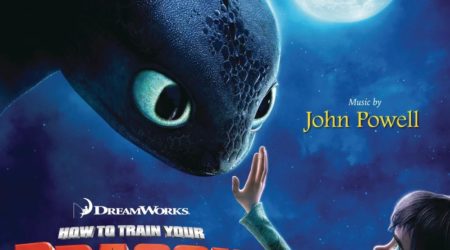
In the beginning of 2021, Netflix announced a live-action adaptation of the very popular Japanese anime series Cowboy Bebop. This is amazing news, and, hopefully, the new series will be able to live up to the success of the original. One of the important reasons for its success was the music, in addition to a very interesting futuristic world and intriguing character design. I was ecstatic when I received the information that the original composer Yoko Kanno was on board to write the music for the adaptation. Since it is very likely that I will be reviewing the soundtrack when the Netflix show comes out, it’s just as likely that I will reference the original music. Enough reason for me to watch the anime again after 20 years, and to see how the music works in that show. Analyzing the music on its own is not a big challenge for me, since I have owned the imported CD for many years, and I also have the new vinyl edition, which was released last year, in my collection. That specific release has some extra tracks that I will not review here, but it is worth considering if you are thinking about buying one of the releases.
As you can see in the title of the review, I am not crediting the soundtrack to Yoko Kanno alone, but also to the Seatbelts, who are the official artists of the album. To explain the reasoning behind that, I need to elaborate more on the anime itself. The series revolves around four main characters on a spaceship who live their lives as bounty hunters. While the series takes place in our solar system, the show is more like a heist show with guns, cigarettes and clothing from the late nineties. Each episode is about 20 minutes long and is a small story on its own, called a “session,” with an extra custom title that has something to do with music, like ”Asteroid Blues,“ “Jamming with Edward” and “Mushroom Samba”, and the Seatbelts are perfect for making that music happen. They are a group of skilled musicians who are also very good at improvising. Next to Yoko Kanno herself on keys, they consist of guitarists, percussionists, a double bass player and a group of musicians playing wind instruments, including brass, woodwinds and a harmonica, and when you listen to their music for Cowboy Bebop, you can hear the result of a fruitful jam session.
The first track “Tank!” is perfect to start the album with. Not only is it the title music for each episode, but you can also hear a voice-over in the track to tell the musicians (and the audience) to jam and have fun. It is also an amazing introduction to the rest of the music. It is a brilliant blend of the wind instrument players playing perfectly in sync and magnificent solos, played over a solid foundation created by the versatile group of musicians. “Tank!” is the result of musicians having fun, and it is not the only fun track on the album. “Bad Dog No Biscuits” is a track that takes the fun to an even higher level. It’s a fast-paced ska piece, in which the brass section ignores all the musical rules and just lets their instruments rip. “Too Good Too Bad” is a fantastic piece for me, because my own instrument, the tuba, plays a major role in it: It lays a solid foundation for the other musicians, but the tuba player also does some excellent improvisations of his own.
The tracks I mentioned above are meant for the action moments in the anime, but not everything is like that in the show, and the blues tracks are wonderfully suited to support the slower parts. “Spokey Dokey” and “Cosmos” are superb solos by a harmonica and muted trumpet respectively, and “Felt Tip Pen” is a lovely blues piece in which a couple of musicians from Seatbelts are having a jolly good time.
As I do often with reviews, I will refrain from highlighting all the tracks on the album to not make the review too long. Each track is worth a listen. There is one track, however, that I would still like to mention, which is “Rain.” This track is a regular song, sung by Steve Conte on the album, but in the anime itself the song is performed by female vocalist Mai Yamane. What I like about the song is that the vocals are supported by a pipe organ, which is an uncommon instrument to be supporting a vocalist, and it makes this song very enjoyable to listen to.
It was an interesting journey to rewatch the Cowboy Bebop anime, because when I saw it for the first time, my passion for film music had not yet begun. Watching it again made me relive the stories and see how the music, that I know so well, has been implemented. As is typical for Cowboy Bebop soundtracks (this is the first album of a couple), the tracks on this album are used as a library, and they have been added to spots in the anime where they fit. What I like about some of the uses of the music is that it is just there to provide atmosphere. Hearing one of the faster-paced tracks during a brawl is a bit out of place, but that is the charm of it. The music enforces the story: Do not follow the rules, just do what you do best and have fun with it. I think that is one of the reasons why the music works in the original show: It expresses fun and freedom. The music that Yoko Kanno has written and performed together with the Seatbelts is iconic, and hopefully, the new music that Kanno is writing for the new Netflix series will have the same vibe. I am looking forward to it.
Listen or buy
- Buy this soundtrack from Amazon.com (Vinyl release) or Apple Music
- Listen to this soundtrack on Spotify
- Request a track of this soundtrack on StreamingSoundtracks.com
Tracklist
The highlights are in bold.
- Tank! (3:30)
- Rush (3:34)
- Spokey Dokey (4:05)
- Bad Dog No Biscuits (4:10)
- Cat Blues (2:37)
- Cosmos (1:37)
- Space Lion (7:11)
- Waltz for Zizi (3:29)
- Piano Black (2:47)
- Pot City (2:14)
- Too Good Too Bad (2:34)
- Car 24 (2:49)
- The Egg and I (2:42)
- Felt Tip Pen (2:42)
- Rain (3:23)
- Digging My Potato (2:24)
- Memory (1:31)
Total length: 53 minutes
SUNRISE Music (1998)




